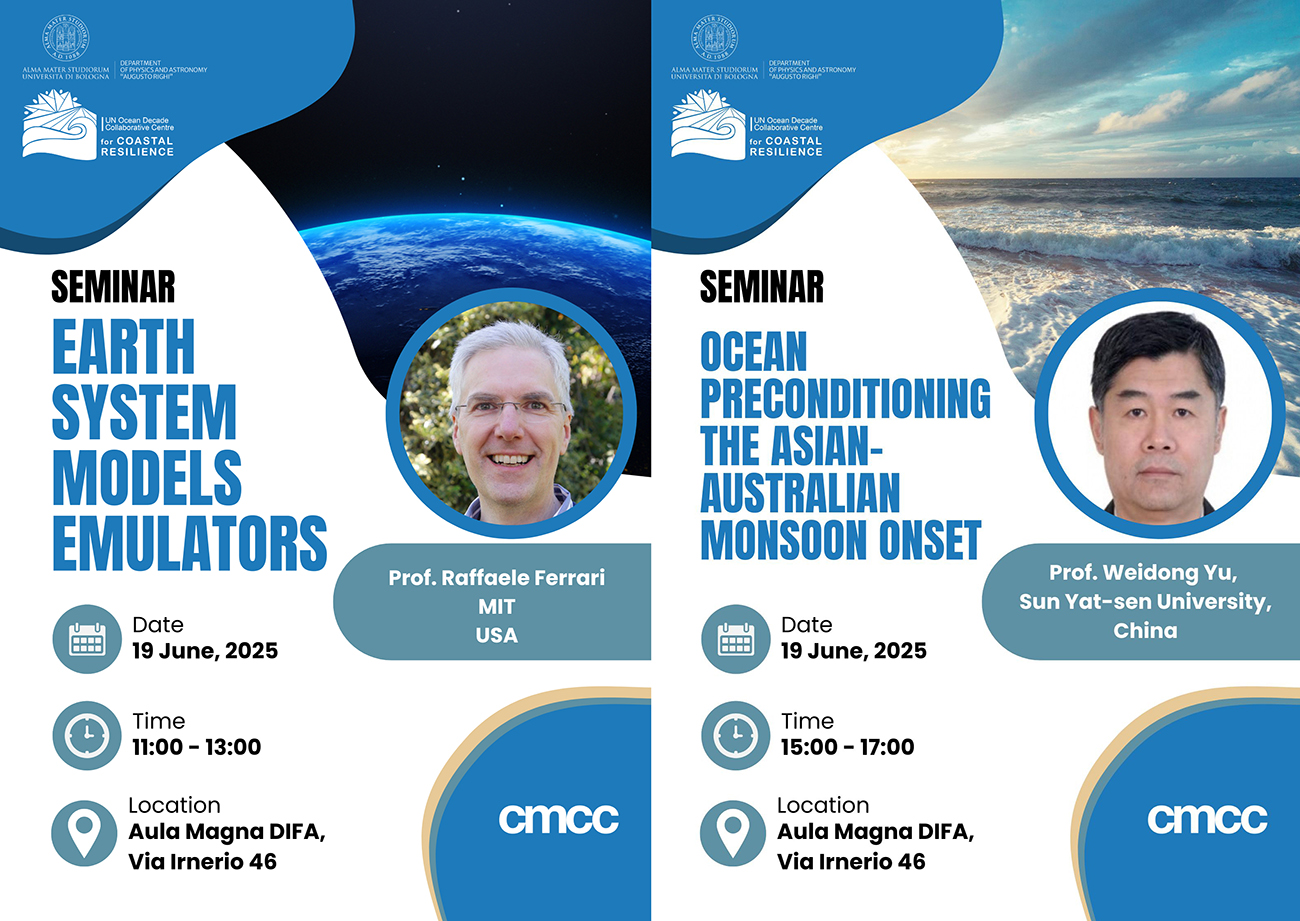Seminar Day
19 June 2025 | Aula Magna, DIFA, Via Irnerio 46, Bologna
Remote participation available via Zoom
More information

Two international seminars are organized on June 19, 2025: a training opportunity for students and PhDs hosted by the Decade Collaborative Centre for Coastal Resilience in collaboration with the Department of Physics and Astronomy (DIFA) of the University of Bologna and the CMCC Foundation.
Seminar 1 | 11:00 – 13:00
Earth System Models Emulators
Speaker: Raffaele Ferrari, Massachusetts Institute of Technology, USA
The need to assess which interventions are most effective for mitigating and adapting to future climate change is growing steadily. However, Earth System Models (ESMs) require computational resources that are typically only accessible to highly specialized research centers. ESM emulators are emerging as a more affordable and accessible alternative for studying how key climate variables respond to different projections of future greenhouse gas emissions.
These emulators are trained using outputs from ESM simulations based on a limited number of future scenarios, and can then simulate alternative scenarios in a fraction of a second. In this presentation, we introduce a hierarchy of emulators that combine physical principles with neural networks to predict the evolution of various climate statistics of interest at every point on the globe, in response to user-defined emission scenarios.
Additionally, these emulators provide an estimate of the uncertainty associated with each prediction. Finally, we will present an application in which the emulators are coupled with an energy model capable of estimating emissions based on decisions about future energy sources.
Seminar 2 | 15:00 – 17:00
Ocean Preconditioning the Asian-Australian Monsoon Onset
Speaker: Weidong Yu, Sun Yat-Sen University, China
The Asian monsoon region is characterized by the abrupt onset, i.e. the quick dry-wet transition in days. The classic theory emphasizes the elevated heating effect of the Tibetan Plateau in boreal spring. However, three Asian monsoon components (Indian monsoon, Bay of Bengal monsoon and South China Sea monsoon) do not onset simultaneously, but with the surprising sequence of Bay of Bengal, South China Sea and India. With the microwave satellite such as TRMM and the Indian Ocean Observing System (IndOOS), the sea surface temperature (SST) data clearly reveals that the ocean preconditions the monsoon onset. SST reaches the annual peak before the monsoon onset, which helps trigger the monsoon onset through attracting the intra-seasonal oscillation (ISO) into the region. The extension into Australian monsoon onset reaffirms the validity of the present conceptual model. This provides the physical basis for the challenging prediction of monsoon onset, its inter-annual variations and the associated marine heatwave disasters.
Seminars organized by the Decade Collaborative Centre for Coastal Resilience in collaboration with the Department of Physics and Astronomy (DIFA) of the University of Bologna and the CMCC Foundation.

